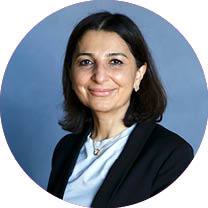“Regionally, crashes have been trending upward over the last 10 years or so with the exception being the two-year period during the COVID-19 pandemic in 2020-2021,” said Jeff Kaufman, Texas A&M American Institute of Certified Planners associate research scientist.
The report prepared by Kaufman looked at 16 focus areas, including regional crashes, which should be considered in addressing the traffic and safety problems. It found that crashes were trending upwards since the early 2010s, until 2019 when there were more than 34,000 regional crashes.
“A lot of these crashes ended up in fatalities across the nation,” Kaufman said.
Since 2019, the numbers have fallen because of COVID-19, and even statewide compared to major metro areas, such as Dallas, Fort Worth, Houston and San Antonio, greater Austin crash rates have been considerably lower, which is positive for the region, Kaufman said.
On the other hand, regional fatalities are on the rise in the last 10 years and up by 50% since 2012. Even during the pandemic, fatalities continued rising. The report showed the region this year will surpass 2021 levels.
“Looking at 2022 as of yesterday, [there were] 262 fatalities reported in the region compared to 287 total for last year. It appears that the region will surpass 2021 levels,” he said.
The report showed nonmotorized road users, especially bicycle and pedestrian fatalities, are 21% of all the region's traffic deaths, despite only being 2.6% of all the region's crashes. Pedestrians represent 90% of fatalities, compared to 10% of bicyclists. For serious injuries, it is 70% pedestrian versus 30% for bicycles, the report said.
Crashes in which a single car drove off the road into poles or another obstruction causing serious injuries showed five different factors as causes: distraction, alcohol, speeding motorcycles, unbelted passengers, and pedestrians. Distraction was cited as the most frequent.
During the CAMPO meeting, the board brainstormed ideas to address the traffic fatalities problem.
“One of the things important to have as a part of conversation is how many fatalities are in our TxDOT roadways. Last year, two out of three fatalities, and this year three out of four, are in our region. In 12 hours, there were three fatalities on Hwy. 183 and Hwy. 290,” said Alison Alter, Austin City Council District 10 member and mayor pro tem.
The Texas Department of Transportation has vision zero goals for 2050 that need to be kept in mind, she said.
Council Member Natasha Harper-Madison talked about how District 1 is planning to reduce the speed limit on roads where crashes are up. If people could see what speeding does and what that looks like on the other end, they might be more impacted, Harper-Madison said.
“When people don't see regular patrols they feel emboldened to exceed the speed limits,” Williamson County Precinct 2 commissioner Cynthia Long said.
The board called attention to the report to be used as a guide in roadway designs. They also talked about how a crash in one area causes a domino effect in the other and discussed the use of Teens in the Drivers Seat program, a statewide peer-to-peer safety program in which high school students talk to their friends instead of adults about traffic safety.









